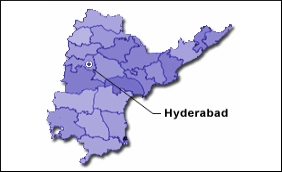|
|
|

|
Incentives for MSMEs in AP's new industrial policy
|
|

|
|
| Top Stories |
 |
|
|
|
SME Times News Bureau | 19 Jun, 2010
Andhra Pradesh Government has announced a new industrial policy for the next five years, which offers a series of incentives, especially for micro, small and medium enterprises (MSMEs).
The state cabinet, chaired by Chief Minister K. Rosaiah, approved the policy for 2010-2015 aiming to attract Rs.15,000 crore investment annually and create 500,000 jobs every year.
The policy has set a target of 17 percent growth in manufacturing and increased investment subsidy for micro and small enterprises from Rs.15 lakh to Rs.20 lakh.
Information and Public Relations Minister J. Geeta Reddy told reporters that it was the best industrial policy in the country with potential to transform Andhra Pradesh into the top investment destination.
The policy, which comes into effect from July 1, focuses on MSMEs and food processing units. It is also aimed at facilitating reduction of regional and sub-sectoral imbalances.
The government will promote industries along the gas pipeline laid in the state to take advantage of the availability of natural gas.
The policy has also changed the definition of a mega project by enhancing the existing limit of Rs.100 crore investment to Rs.250 crore. "However, any project creating employment for more than 2,000 persons is also proposed for consideration of special package of incentives under mega projects," said a government statement.
The policy offers 75 paise reimbursement of power cost for each unit. The present electricity tariff for industry is Rs.3.53 per unit, the lowest compared to other industrially developed states.
The government will provide Rs.100 crore every year for promotion of industrial infrastructure for micro and small enterprises.
The other highlights of the new policy includes 25 percent of VAT (value added tax) reimbursement for large and medium enterprises, 50 percent VAT reimbursement for small enterprises, 5 percent additional subsidy to women entrepreneurs, 10 percent of plots to women entrepreneurs in the new industrial estates, special incentives for entrepreneurs belonging to scheduled castes and scheduled tribes.
|
|
|
| |
|
|
|
|
|
|
|
Incentives for MSMEs in AP's new industrial policy
Prof.P.Madhu Sudana Rao | Tue Jun 22 05:27:29 2010
Many states, in desperate hopes of boosting their economies, resort to industrial policy as a means of promoting economic development. They will use financial incentives to help promote industrial activity. Such efforts may work on occasion, but in general, they have serious shortcomings.
First, industrial policy presumes that a few bureaucrats in a state government office know what the future will hold, i.e. which firms and sectors have the most promise in the future. What if they are wrong?
Second, such economic development plans offer opportunities for political meddling and even rampant corruption.
Third, such efforts may lead to a lower cost of doing business for a few firms or sectors, but the state government has to make up for that lost tax revenue in some way. Some of that may be made up by higher economic activity, but often, states find themselves raising overall tax rates while pursuing targeted tax breaks for specific companies. The higher marginal tax rates depress overall economic activity, and thus, the state's economic development policy does more harm than good.
Economic growth generally benefits from efforts to expand the tax base while lowering marginal rates. Thus, states would be better off finding ways to lower the cost of doing business for all firms, and letting entrepreneurs and innovators discover which sectors are most attractive (rather than state politicians). In contrast, many economic development policies today find states shrinking their t

|
|
|
|
|
|
|
| |
| Customs Exchange Rates |
| Currency |
Import |
Export |
US Dollar
|
84.35
|
82.60 |
UK Pound
|
106.35
|
102.90 |
Euro
|
92.50
|
89.35 |
| Japanese
Yen |
55.05 |
53.40 |
| As on 12 Oct, 2024 |
|
|
| Daily Poll |
 |
 |
| Will the new MSME credit assessment model simplify financing? |
|
|
|
|
|
| Commented Stories |
 |
|
|
|
|
|
| |
|